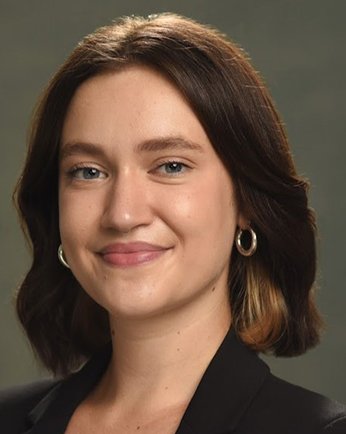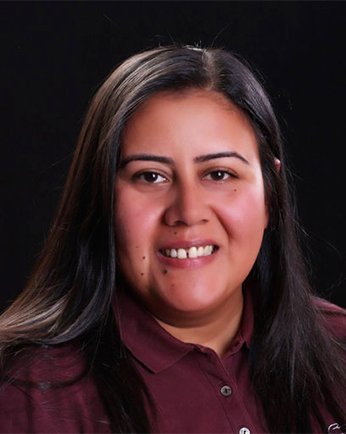Session Abstracts:

Graduate Student Researcher
Texas A&M University
Post-Tornado Automated Building Damage Evaluation and Recovery Prediction by Integrating Remote Sensing, Deep Learning, and Restoration Models
Co-Authors: Maria Koliou (Texas A&M University)
Abstract: This study introduces a novel methodology that integrates remote sensing, deep learning, and restoration models to streamline building damage assessment and recovery time predictions following tornado events. In contrast to existing research primarily focused on pre-hazard mitigation and preparedness, this study advances the field by extending the application of engineering models to the post-hazard emergency response and recovery phase. The novelty lies in utilizing remote sensing and deep learning to automate the generation of large-scale maps for tornado damage. Then, building damage evaluation is integrated with restoration models for rapid estimations of post-disaster restoration time and cost. Through a comprehensive application study focused on the 2011 Joplin Tornado, the methodology is demonstrated to be fully automated. The predictions were validated against historical reports, highlighting the methodology's effectiveness in generating accurate damage evaluation and restoration predictions. This study stands out as the first to leverage remote sensing imagery-based damage evaluation to extend the utility of regional risk assessment beyond pre-tornado planning, thus enhancing post-tornado disaster response and recovery efforts.

Graduate Student Researcher
Washington State University
Towards Efficient Surrogate Models for Wind Fragility in Transmission Tower Damage Assessment
Co-Authors: Ji Yun Lee (Washington State University)
Abstract: Transmission towers, essential to the power grid, are vulnerable to extreme wind events, leading to widespread power outages. Fragility models are widely used to predict wind-induced damage to transmission towers. While physics-based fragility models offer greater accuracy than purely data-driven models, they present several challenges: they are computationally intensive and highly specific to the modeled tower, making system-level damage assessments difficult for grids with diverse tower designs. These limitations hinder practitioners from applying physics-based models for comprehensive system-level assessments.
To reduce these barriers, we develop a surrogate wind fragility model that can be applied to a wide range of transmission tower designs across different locations in the United States. Unlike existing surrogate models, our approach offers three contributions. First, contrary to the models focusing on a single environmental variable, our model accounts for the combined effects of wind speed, direction, and rainfall intensity, recognizing that extreme wind events often accompany heavy rainfall. Second, our procedure includes both design and fragility analysis phases, ensuring the model reflects location-specific factors in tower design and analysis. By incorporating the design process, our surrogate model can design any tower based on site-specific wind speeds and ice thickness, greatly improving its generalizability. Finally, to reduce the computational burden of creating large training datasets, we leverage high-performance computing and parallel computing techniques and introduce a novel approach using generalized additive models for more efficient processing and model development. The proposed procedure will streamline the development of a robust surrogate model for practitioners conducting system-level damage assessment.

Professor
Missouri University of Science and Technology
Applying the Coupled CM1 and CFD Simulation Approach to Simulate Tornado-Community Interaction
Co-Authors: Jiamin Dang (Missouri University of Science and Technology), Leigh Orf (University of Wisconsin Madison), Grace Yan (Missouri University of Science and Technology), and John W. van de Lindt (Colorado State University)
Abstract: A tornado-community interaction model can be used to evaluate tornado hazard mitigation strategies, which can facilitate building more wind-resistant buildings and the ability to build back better after a tornado strike. In this study, a simulation approach based on the one-way coupling of a meteorological cloud model (CM1) and CFD is developed to simulate tornado-community interaction. This coupled simulation exploits high spatial resolution and realistic boundary conditions in CFD simulation, driven by the temporally and spatially varying velocity and pressure provided by CM1. This coupled approach successfully generated a translating tornado in the CFD domain, with an asymmetrical flow field and tilting vortex structure. The variation of pressure deficit along the height in the simulation with the community is compared with the simulation without community, indicating that tornado-community interactions increase the pressure deficit at low elevations and reduce it at higher elevations. Furthermore, the effects of structures on fluid properties diminish with height. The coupled simulation approach can provide the tornado-induced pressures on the structural components of each building, which can compared with corresponding resistance to determine the damage condition of each building and the entire community. When the simulated community-level damage is matched to the post-storm survey, this tornado-community interaction will be calibrated and employed to evaluate the performance of potential construction combinations to inform retrofit.

Graduate Student Researcher
Oklahoma State University
Fragility Analysis of Transmission Towers through Physics-Based Modeling of Tornado-Induced Wind and Debris Impact Loads
Co-Authors: Brian Giffin (Oklahoma State University)
Abstract: Wind-borne debris is a significant contributor to structural damage during high-intensity wind events, but existing methods for estimating debris impact loads on structures are relatively limited. These limitations stem from inherent uncertainties and lack of knowledge regarding the characterization of combined wind and debris loads, as well as a lack of computational modeling strategies for representing wind-borne debris impacts and their effects on structures. In the present study, a physics-based fluid-structure-debris modeling framework coupled with OpenSees is developed to investigate and quantify of the extent to which wind-borne debris impact contributes to structural damage and collapse. Specific focus is placed on assessing the risk of structural collapse of electrical transmission towers subjected to tornadic winds. Within the proposed modeling framework, flying debris is represented through discrete realizations of debris trajectories and impacts, with the nonlinear transient dynamic behavior of the structure of interest modeled using OpenSees. Collisions between debris and the structure are resolved through a penalty-based contact enforcement strategy. A parametric vortex model is used to represent the wind field and to determine wind pressures acting on both the structure and the debris. As a particular application of the proposed methodology, damage and collapse fragility curves were developed for a representative lattice transmission tower using quoFEM, incorporating variability with respect to relevant structural, wind field, and debris loading parameters. The study presents findings which quantitatively compare the estimated risk of collapse when debris impact is included/excluded in the analysis to assess its relative importance.

Graduate Student Researcher
University of Notre Dame
Computer-vision enabled subassembly damage detection from hurricanes using heterogeneous reconnaissance imagery
Co-Authors: Tracy Kijewski-Correa (University of Notre Dame)
Abstract: Coastal communities are increasingly vulnerable to hurricanes, underscoring the urgent need to accelerate disaster learning to enhance response, recovery, and preparedness efforts. Recent advancements in post-disaster imagery and computer vision offer significant opportunities to automate this learning process. Current research in this area has focused on assigning damage levels to buildings from at-a-distance imagery or identifying highly granular damage from close-up images, resulting in a gap in assessing subassembly-level damage from at-a-distance imagery. This study introduces a workflow designed to quantify subassembly damage using in-the-wild reconnaissance imagery, focusing on both building envelope and primary structure subsystems. The workflow utilizes two classification models to optimize computational resource allocation, followed by a segmentation model, trained with resources from the SimCenter’s BRAILS open-source tools, to determine the percentage of damage to each subassembly. To evaluate the effectiveness of the workflow and the impact of image quality, we applied it to several datasets containing images of 373 single-family homes in Calcasieu Parish, Louisiana, an area heavily impacted by Hurricane Laura in August 2020. We compared damage assessments made by homeowners, those conducted by engineers, and model-predicted damages. The results highlight the potential for advancing computer vision techniques in assessing granular damages from reconnaissance imagery. Although high-resolution images provide moderate accuracy in classifying subassembly damage, accuracy tends to decline as damage severity increases. This indicates a need to refine the models to better differentiate severe damage and to expand training datasets to encompass a wider range of severe damage scenarios.

Assistant Professor
Florida International University
Observations and Analysis of Wind Pressures on Partially Elevated Coastal Buildings: Insights from Field Damage and Wind Tunnel Testing
Co-Authors: Haitham A. Ibrahim (Florida International University) and David O. Prevatt (University of Florida)
Abstract: Elevating coastal homes on columns or piles is widely used to mitigate the risks of flooding and storm surges. Despite this, recent hurricanes have revealed a potential vulnerability in this design approach, with many elevated structures suffering significant wind damage even at wind speeds below the current design thresholds. Analysis for the performance of elevated buildings during Hurricanes Irma (2017), Harvey (2017), and Michael (2018), indicated a statistically higher vulnerability to wind damage compared to slab-on-grade structures. Notably, reconnaissance data showed that approximately 60% of these elevated homes had enclosed areas below the elevated floor, classifying them as partially elevated buildings. To better understand this increased vulnerability, we conducted large-scale aerodynamic wind tunnel tests on various configurations of partially elevated buildings. Four 1:10 scaled models of single-story gable-roof buildings were tested, three of which had enclosed areas covering 19% to 54% of the model footprint. These tests were performed at the Natural Hazards Engineering Research Infrastructure (NHERI) Wall of Wind (WOW) Experimental Facility at Florida International University (FIU). This presentation explores how experimental data from the NHERI WOW can enhance our understanding of the observed field damage in coastal partially elevated houses, providing insights into their aerodynamic behavior and structural vulnerabilities.

Assistant Professor
University of Florida
Evaluating data requirements for calibration of stochastic wind models with a focus on extreme responses
Co-Authors: Thays Duarte (University of Florida), Srinivasan Arunachalam (Verisk Analytics), Arthriya Subgranon (University of Florida), and Seymour M.J. Spence (University of Michigan)
Abstract: The growing interest in Performance-Based Wind Engineering has increased the demand for effective stochastic wind models to simulate non-Gaussian dynamic wind loads. Traditional stochastic models, particularly translation-based approaches, can be sensitive to the choice of marginal distributions and spectral functions. Although wind tunnel data can improve model calibration by capturing building-specific aerodynamic phenomena, simulating stochastic processes with accurate characteristics of the extremes remains challenging. It is demonstrated in this work that the data-informed stochastic models can potentially underestimate extreme wind loads, hence leading to an underestimation of extreme responses. The work emphasizes challenges caused by lack of consensus on calibrating marginal distribution and determine the amount of data needed, not only for the reliable simulation of loads and responses, but also analytical peak-factor-based approaches. To address this, the study investigates the effect of choice of marginal distribution and data length on the model performance through a numerical example involving a 15-floor building model subjected to stochastic wind loads. To set up a ground truth, synthetic long-duration wind load datasets, based on analytical marginal distribution and spectral function, are used to represent an infinitely long wind tunnel data and obtain target extreme measures. For the simulation, the stochastic model is calibrated with different lengths of synthetic data and marginal distributions. The simulated extreme loads and responses are compared against the target measures to evaluate different calibration strategies. This study offers guidance for effectively using data-informed stochastic models, which will be incorporated into the WE-UQ tool from SimCenter.

Graduate Student Researcher
University of Michigan
Holistic collapse assessment of envelope and structural systems of high-rise buildings in extreme winds
Co-Authors: Seymour M.J. Spence (University of Michigan)
Abstract: Performance-based wind engineering has rapidly advanced in recent years, with the development of various performance assessment frameworks for engineered building systems. However, research on nonstructural systems, such as the building envelope, remains limited compared to structural systems. The performance of the envelope system in a probabilistic high-fidelity modeling environment under extreme winds—which can cause highly nonlinear structural behavior and potentially lead to structural collapse—remains unknown. This is critical given the essential role that the envelope system plays in terms of life safety. For this purpose, a high-fidelity nonlinear modeling environment is employed to simulate localized damages, including yielding, buckling, low-cycle fatigue, and component fracture, up to structural collapse. A holistic computational framework that integrates the high-fidelity structural model with a multi-demand progressive damage model for the assessment of the envelope system is developed, where the damage susceptibility of the envelope system is modeled through suites of component-level sequential fragility functions. Wind tunnel-informed stochastic models are used to represent wind pressure on the envelope and structural systems, while internal pressure at damage-induced openings is modeled using the Bernoulli equation and mass conservation principles. A case study consisting of a 45-story reinforced concrete building is used to illustrate the application of the framework and to examine the effects of envelope component strength and uncertainty on the probabilistic performance of the integrated structural and envelope systems. Insights are gained into the relative performance of the envelope and structural systems up until the complete loss of stability of the structural systems.